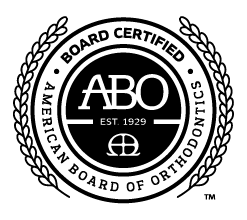Frequently Asked Questions
Below are common questions and our answers about the best way to care for children’s teeth.
When should I schedule my child’s first visit to the dentist?
We recommend that you make an appointment to see Dr. Kramer and Dr. Bunin as soon as your child gets that first tooth. The American Academy of Pediatric Dentistry recommends that a child be seen by six months after the first tooth erupts or by one year of age, whichever is first.
Subsequently, your son or daughter should visit our Burke, VA dental office every six months for regular dental cleanings and checkups. We recommend fluoride treatments twice a year, along with cleanings to keep teeth their strongest.
Tooth sealants are also recommended because they “seal” the deep grooves in your child’s teeth, and prevent decay from forming in these hard-to-reach areas. Sealants last for several years, but will be monitored at your regular checkups.
How is a pediatric dentist different from other dentists?
All dental specialists (pediatric dentists, orthodontists, oral surgeons, and others) begin by completing dental school and continue their education with several years of additional, specialized training. During training in the field of pediatric dentistry, Dr. Kramer and Dr. Bunin gained extensive knowledge and experience in treating infants, children, and adolescents.
Pediatric dentists enjoy working with children, and bring to each patient our expertise in childhood development and behavior. Because our office is geared toward young visitors, you’ll find that our staff, as well as our office design, decorations, and activities, all work together to provide an especially friendly and comfortable environment for children.
What happens during my child’s first visit to the dentist?
The first visit is usually short and simple. In most cases, we focus on getting to know your little one and giving you some basic information about dental care and nutrition. Dr. Kramer and Dr. Bunin will check your child’s teeth for placement and health, and look for any potential problems with the gums and jaw.
We will perform a dental cleaning and if age appropriate, a fluoride treatment. We will also answer any questions you have about how to care for your child’s teeth as they develop, and provide you with materials that contain helpful tips you can refer to at home. Your youngster will then get to visit the “treasure box” and leave with an array of goodies that make him or her feel like a star.
How can I prepare my child for the first dental appointment?
The best preparation for your child’s first visit to our office is to maintain a positive attitude. Children pick up on adults’ apprehensions, and if you make negative comments about trips to the dentist, you can be sure your child will anticipate an unpleasant experience and act accordingly.
Show your youngster the pictures of the office and staff on the website. Let him or her know that it’s critical to keep the teeth and gums healthy, and the doctor will help them do that. Remember that Dr. Kramer and Dr. Bunin are specially trained to handle fears and anxiety, and our staff excels at putting children at ease during treatment.
How often should my child visit the dentist?
We generally recommend scheduling checkups every six months. Depending on the circumstances of your son or daughter’s oral health, we may recommend more frequent visits.
How do I instill healthy oral hygiene habits in my child?
As your child’s teeth erupt, be sure to examine them every two weeks: Look for lines and discoloration that may be caused by decay. Remember that sugary foods and liquids can attack a new tooth, so take care that your child brushes his or her teeth after feeding or eating. We recommend brushing four times a day for optimal oral hygiene: after breakfast, after lunch, after dinner, and at bedtime.
When should my child start brushing and flossing?
Brushing can be fun, and your child should brush as soon as the first tooth arrives. When a baby’s tooth erupts, brush it with a soft-bristled toothbrush and a smear of non-fluoridated toothpaste. For children younger than two, do not use fluoride toothpaste. After two years of age, you can begin to use a small smear of fluoride toothpaste. We suggest reviewing proper tooth brushing procedures with your child.
Flossing is also a part of good oral hygiene habits, and Drs. Kramer and Bunin will discuss with you the right time to start flossing. If you notice signs of decay, contact our office immediately.
What’s the best way to clean my baby’s teeth?
Even before your baby’s first tooth appears, we recommend you clean the gums after feedings with a damp, soft washcloth. As soon as that first tooth appears, you can start using a toothbrush. Choose a brush with soft bristles and a small head. You can most likely find a toothbrush designed for infants at your local drugstore.
At what age is it appropriate to use toothpaste to clean my child’s teeth?
Once your child has a few teeth, you can start using a non-fluoride toothpaste on the brush. Use only a tiny amount for each cleaning, and be sure to choose toothpaste without fluoride for children under two.
Always have your child rinse and spit out toothpaste after brushing, to begin a lifelong habit that will be necessary after graduation to fluoride toothpaste. Children naturally want to swallow toothpaste after brushing, but swallowing too much fluoride toothpaste can cause teeth to stain. You should brush your child’s teeth until he or she is ready to take on that responsibility, which usually happens by age six or seven.
What causes tooth decay and cavities?
Tooth decay is caused by sugars left in the mouth that turn into an acid which can break down the teeth. Children are at high risk for tooth decay for a simple reason: many children and adolescents do not practice regular, good oral hygiene habits. Proper brushing and flossing routines combined with regular dental visits help to keep tooth decay away.
What causes cavities?
Certain types of bacteria live in our mouths. When they come into contact with sugary foods left behind on our teeth after eating, acids are produced. These acids attack the enamel on the exterior of the teeth, and eventually eat through the enamel and create holes in the teeth, which we call cavities.
How can I help my child avoid cavities?
Be sure that your child brushes his or her teeth at least twice a day with fluoride toothpaste. Flossing daily is also vital, because flossing can reach spots between the teeth that brushing can’t.
Check with Dr. Kramer and Dr. Bunin about a fluoride supplement which helps tooth enamel become harder and more resistant to decay, if you live in an area with well water. Avoid sugary foods and drinks, limit snacking, and maintain a healthy diet. And finally, make regular appointments so we can check the health of your child’s teeth and provide professional cleanings.
Does my child need dental sealants?
Sealants cover the pits and fissures in teeth that are difficult to brush and therefore susceptible to decay. We recommend sealants as a safe, simple way to help your little one avoid cavities, especially for molars, which are hardest to reach.
My child plays sports; how can I protect the teeth?
Even children’s sports involve contact, so we recommend mouthguards for children active in sports. If your little one plays baseball, soccer, or other sports, ask us about having a custom-fitted mouthguard made to protect the teeth, lips, cheeks, and gums.
What should I do if my child sucks a thumb?
The large majority of children suck their thumbs or fingers as infants, and most grow out of it by the age of four without causing any permanent damage to their teeth. If your child continues sucking after permanent upper teeth erupt, or sucks aggressively, let us know and we can check to see if any problems may arise from the habit. Get more information, plus tips on helping your child break the habit >>
When should my child have dental X-rays taken?
We recommend taking X-rays around the age of four and a half to five years old, unless there is an area of concern before then. The first set, called occlusal films, consists of simple pictures of the front upper and lower teeth, which familiarizes your child with the process and helps Dr. Kramer and Dr.Bunin check for any extra teeth or missing teeth.
Once the baby teeth in back are touching each other, bitewing radiographs will be taken to check for any cavities between your child’s teeth. Permanent teeth start coming in around age six, and X-rays help us make sure your youngster’s teeth and jaw are healthy and properly aligned.
If your child is at a high risk of dental problems, we may suggest having X-rays taken at an earlier age.




 Website Powered by Sesame 24-7™
Website Powered by Sesame 24-7™